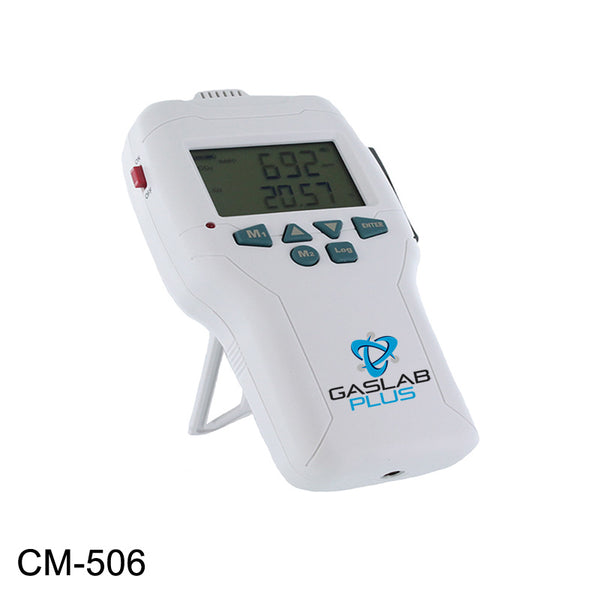
Why is monitoring ammonia and carbon dioxide on poultry farms important?
Poultry farming is a huge business and chicken is the most popular table meat in the world. Eggs are consumed worldwide as a source of protein and Turkey is a prominent staple of diets globally.
Traditionally, your poultry was grown on small, locally owned, family farms where you knew your dinner was raised just a few miles from your dining room table.
Today's trend is towards large scale facilities that raise, slaughter, package, and ship products nationally (and internationally). According to the American Egg Board, there are currently 177 US companies with flocks of 75,000 or more laying hens that produce 99% of the eggs in the US. In the broiler chicken industry, approximately 40 companies process 9 billion birds each year, for the US and export market.
Whether they end up as broilers or egg-laying hens, caged or cage-free, most chicks are grown in poultry houses that hold thousands of birds at one time.
These houses are working hourly to maintain the health and welfare of the birds to meet rigorous standards spelled out by the FDA. Among best practices in the industry is maintaining low CO2 concentrations to help ensure respiratory health and proper growth rates. Farms are also keenly interested in Ammonia (NH3) measurements.
In order to maximize weight gain of broilers or egg production of hens, constant environmental monitoring of these houses is required.
We take a look at just how important Gas Detection is in Poultry Applications, with one of our incredible customers Jason Yordy - a 5th generation farmer and CEO of TurkeyTrac.
TurkeyTrac provides highly advanced, real time data and performance analysis for a mass variety of poultry farms. Their mission is to deliver perfect performance, support and to set a new standard in terms of poultry farm technology.
Aside from their mission to continuously provide and track real time data and performance analysis, TurkeyTrac also uses the CO2Meter Multi Gas Detector (CM-510) to better understand the Carbon Dioxide and Ammonia levels throughout the farm.
Yordy states, "I used the unit in our brooder house at first. We typically have a pretty good handle on the average CO2 of the barn. In fact, we use a CO2 Meter product that monitors CO2 every second of the flocks life. I used the unit to test and validate our stationary unit was still in calibration (which it was). As I walked back from one end of the shed to the other, I realized that there was quite a bit of variance with CO2 in our building. From this knowledge, I changed our ventilation a bit to try to create a more consistent environment for the birds."
Ammonia Levels in Poultry Houses
In terms of NH3, "I also used the ammonia sensor and loved it!"
"In the winter, turkey growers fight ammonia. It's hard to push new air in your building when you need to maintain the right temperatures. It's a balancing act between temperature, humidity, CO2, ammonia, and price of gas. It's an incredibly hard balance, but when you pay close attention to these variables, you can maximize bird performance, as well as maximize profit. Prior to the unit, we couldn't quantify ammonia. This was done based off of years of experience and "having a nose for it." When the ammonia gets too high, we can apply a product on the litter that will neutralize the ammonia."
"Now, when the ammonia levels increase, we have a number (in ppm) that triggers us to take action. We know what level can start to have a negative impact on the birds, and we want to be proactive to make sure the ammonia doesn't ever hit that level."
Ventilation of poultry houses is designed to balance the requirements of bird health and growth with energy costs. Like an office building, too little ventilation leads to poor air quality. Too much ventilation raises heating and cooling costs. To balance these variables, farmers typically monitor air temperature and humidity. However, modern farms monitor carbon dioxide and ammonia levels too.
By regulating CO2 and NH3, growers can shorten the time it takes to transform the chicks into broilers or egg laying hens.
CO2 and NH3 levels serve as the “canary in the mine shaft” for determining the total air quality. High levels of CO2 correspond to high levels of ammonia and hydrogen sulfide from manure, and carbon monoxide and sulfur dioxide from gas/oil heaters. Like humans, all of these chemicals can be detrimental to the health and well-being of the birds.
Studies by the University of Georgia College of Agricultural and Environmental Sciences show that in poultry houses, CO2 levels should be kept below 5,000ppm, and ideally below 3,500ppm. In the EU, the standard for poultry houses is < 2,500ppm. Many of our poultry farm clients, like TurkeyTrac, use our devices to maximize the balance between production and energy efficiency.
Gas Detection Devices for Poultry Farms
CO2Meter designed the NH3 Ammonia Gas Detector version to measure carbon dioxide and ammonia in a variety of applications, but primarily in poultry.
While poultry farmers typically use the rule of thumb that relative humidity between 60-80% results in acceptable indoor air quality, the introduction of CO2 and NH3 controllers can further fine-tune air quality, resulting in improved poultry growth and output for farms nationwide.


